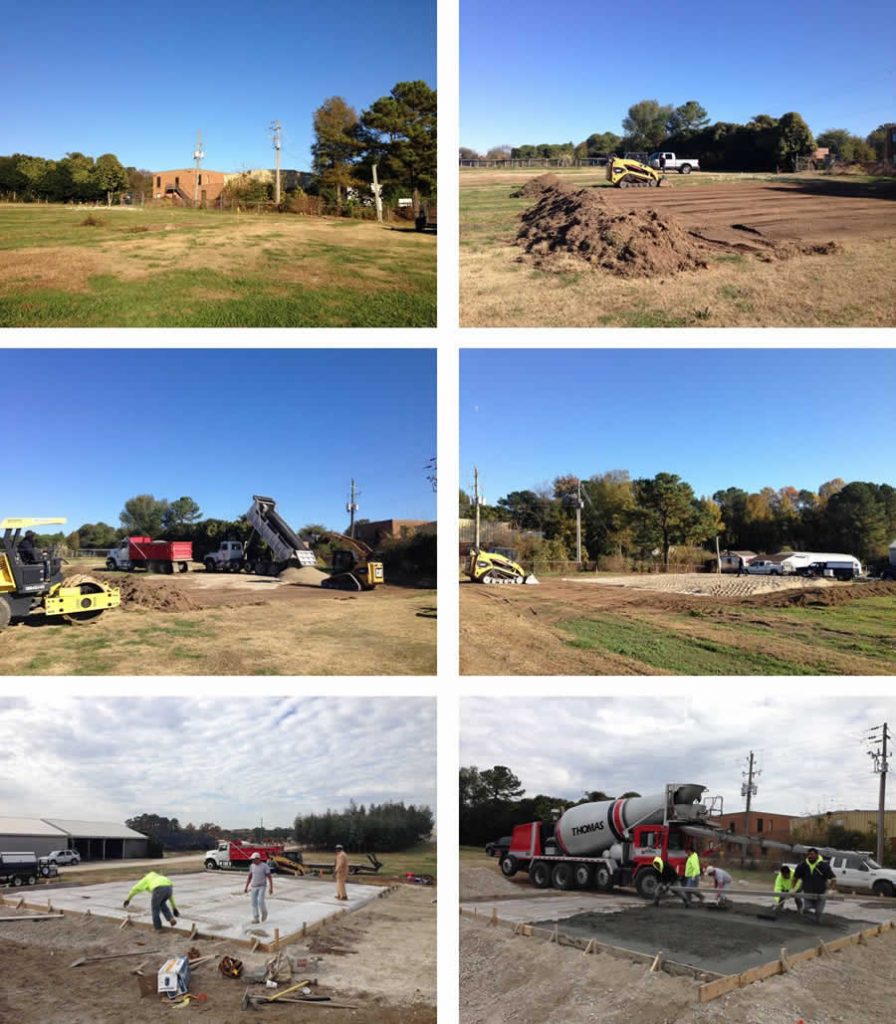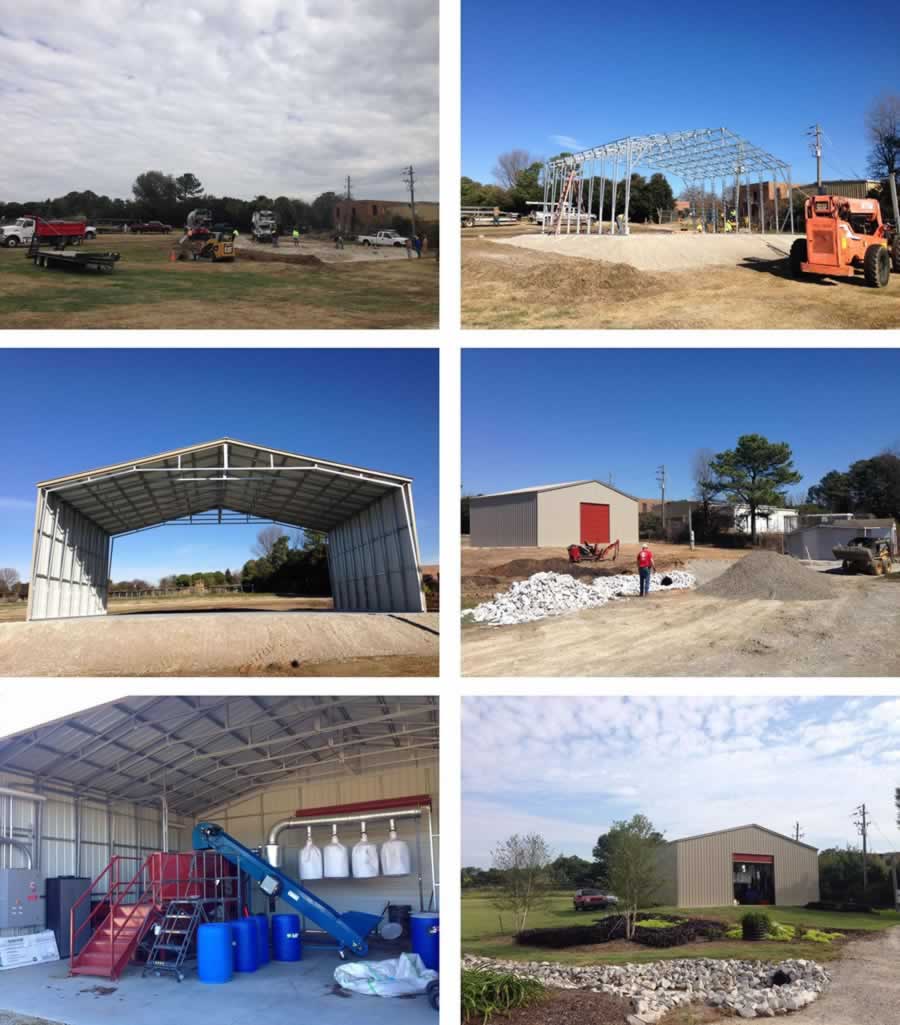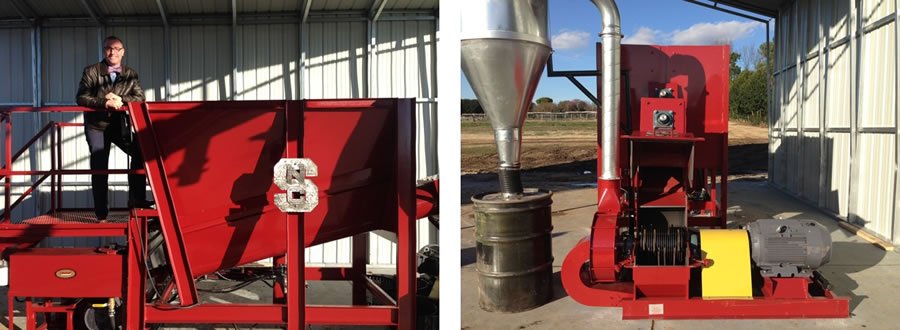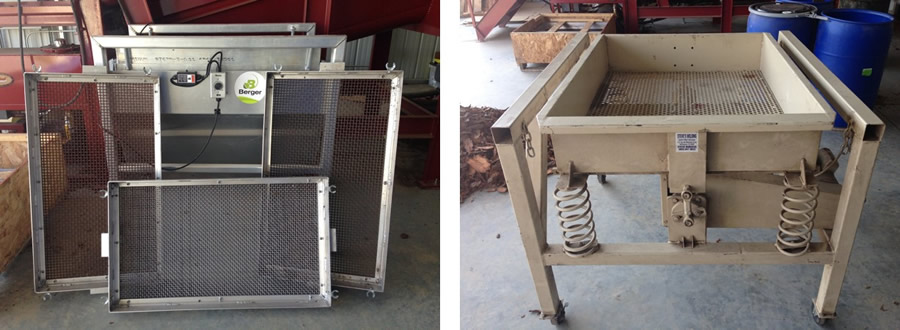Substrate Processing and Research Center (SPARC)
The NC State University SPARC facility was constructed (2013-2014) to house processing equipment needed for the research and development of organic materials used in substrate science. Small equipment and facilities have been used in the past but a larger, more commercial-grade facility was needed to more thoroughly and accurately advance the potential of horticultural substrate design, processing, and construction. Advancing substrate R&D into the realm of engineering has prompted the development of close working relationships and collaborations between our program and Agriculture Engineers at NCSU who are instrumental in guiding us in this new (relatively) area of research.
Construction


Equipment
Hammer Mill

The main feature (component) housed in SPARC is the hammer mill (Meadow’s Mills Inc., North Wilkesboro, NC). Hammer mills are machines that pulverize materials (wood, bark, grain, biomass, etc.) to smaller particle sizes. Hammer mills are very common and have many current uses in various areas of horticulture and agriculture. This larger machine was acquired to “scale-up” the R&D work of our substrate program to a more commercial level to have more directly applicable data and results to share with (and teach) our industry about organic matter engineering and processing.
Shaking Devices

In addition to the hammermill, another important feature(s) of the SPARC include the many shaking/sieving devices that are used for separating milled particles into various size classes and ranges. Consistent organic/substrate particles can then be used for re-engineering specifically designed substrates with specific properties (air porosity, water-holding, drainage, etc.). The ability to process and then separate particles with exact specificity and then recombine them, has created many possibilities in the R&D of current and future horticultural substrates.
Research Facilities, Laboratories, and Greenhouses
The Horticultural Substrates Lab has/utilizes various resources located in several different buildings/areas on NC State’s campus. The primary facility/space is the Substrates Lab located in Kilgore Hall (Dept. of Horticultural Science building). Lab space is also used in the Mary Anne Fox Science Building where a wet lab is available for more of the chemical and biological experimentations. State-of-the-art greenhouse space is also available in the Fox Science Building and these spaces are where available for the HSL and its members to conduct plant growth trials, industry testing trials, teaching labs, and experiments, etc. Lastly, the Horticulture Field Lab (HFL) is a spacious outdoor research facility that serves numerous faculty members in several departments across NC State’s campus. This is the home of the NC State University SPARC.

Grow Trials
The research space utilized by our lab group allows us to conduct state-of-the-art growth trials, large or small, for the industry (substrate manufacturers, growers, academic colleagues, etc.). Space also facilitates numerous research projects that are being conducted year-round by graduate students and professors in the program.
